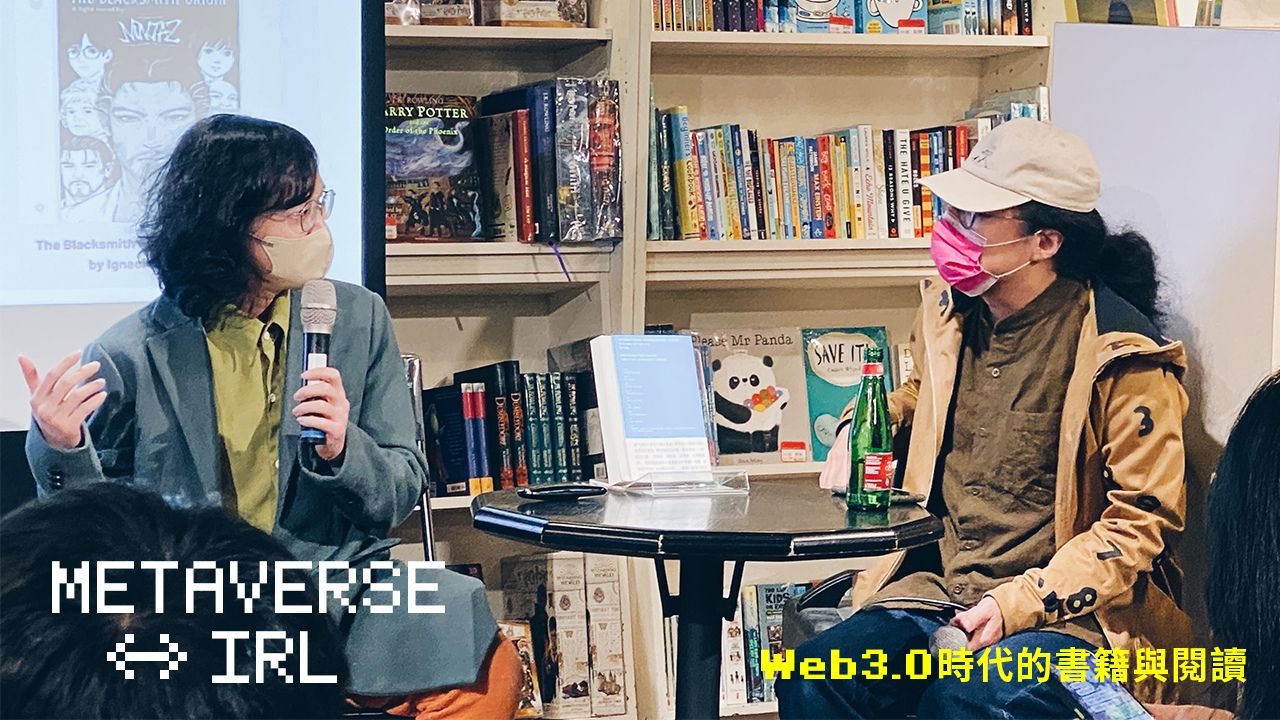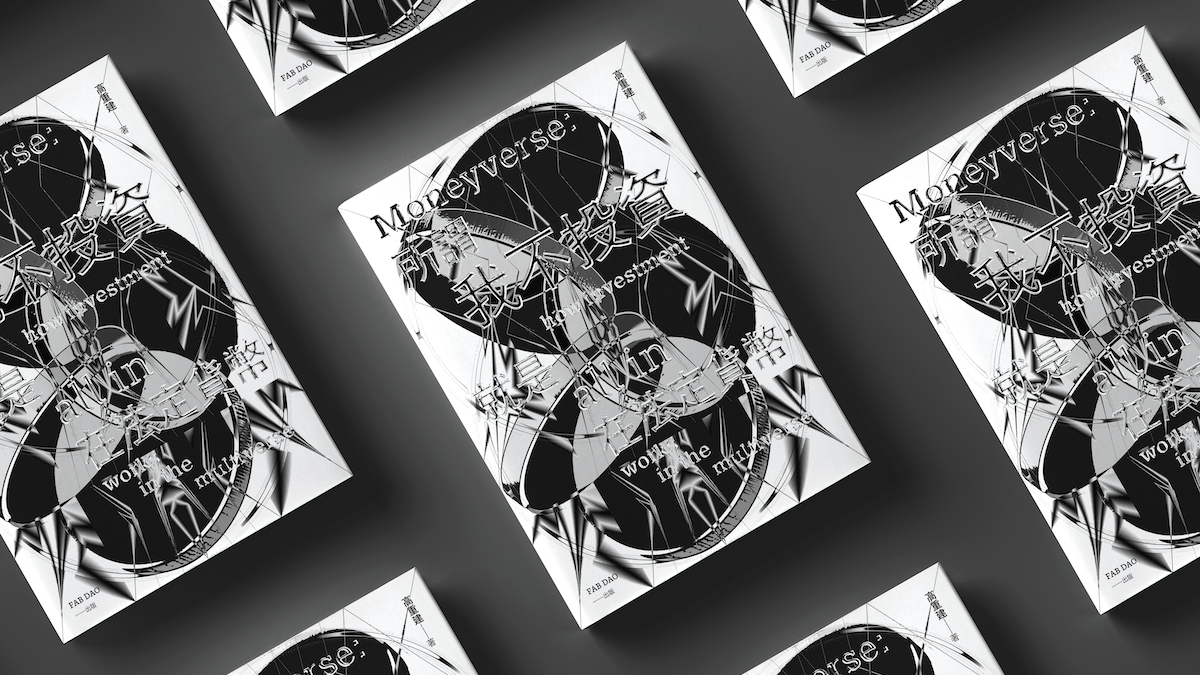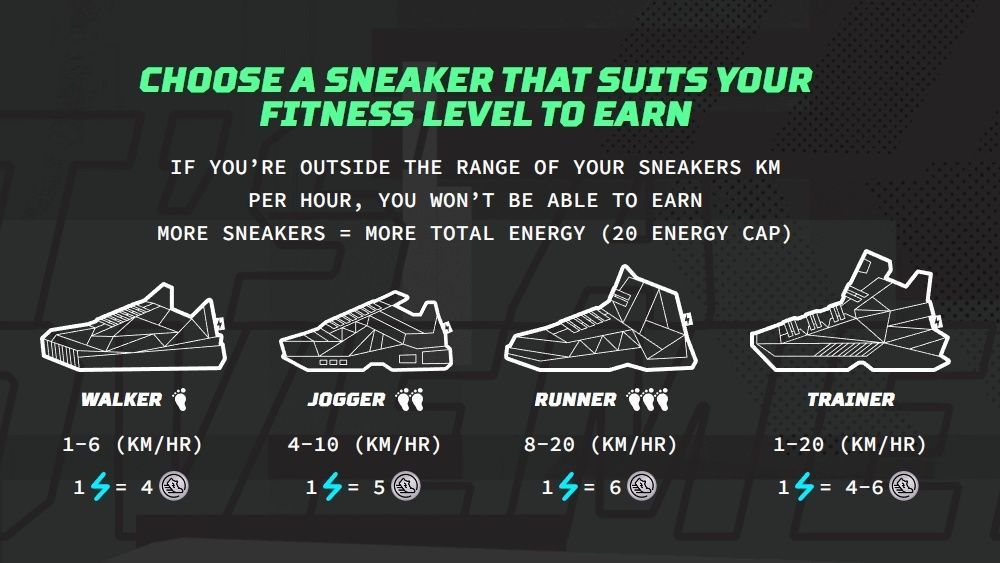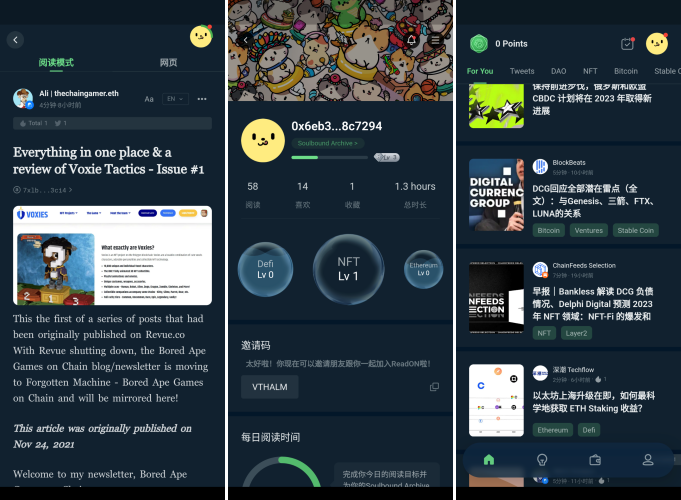
臺灣非營利專業書評媒體。Openbook編輯部將提供原生報導,文化觀察,人物採訪與國內外重大出版消息。 https://linktr.ee/openbooktaiwan
Topic: Rhapsody and Fantasy Published on the Blockchain: Books and Reading in the Web 3.0 Era

Author| Zhou Yizheng (Chief Editor of Pedestrian Culture Lab)
Event name: Rhapsody and fantasy published on the blockchain Time: December 11, 2022 Moderator: @烧雪人ZhuxueDeren.eth
Speaker: Zhou Yizheng
➤NFT book: Use non-homogeneous tokens to regain the characteristics and fun of the paper book era
From the perspective of book development, modern book publishing should have only experienced the major change from "paper" to "digital", and there is no such thing as web1.0, web2.0, and web3.0 as claimed by mainstream Internet narratives These three break-up changes. However, in the era of web 3.0, there is indeed some room for imagination to change between "books" and "reading behavior".
In the era of web 2.0, the publication of books is mainly based on centralized storage, coupled with its derivative copyright protection, what is presented in the e-book market is: readers only have accessibility, not ownership. In other words, although I "bought" an e-book, I couldn't read it anywhere like I bought a paper book, and I could sell it in a second-hand bookstore after reading it.
The actual experience of most e-books at present is: after buying an e-book, you can only read it with the company’s reader (unless you crack its “protection”), and of course there is no market for “second-hand e-books” , The finished e-book cannot be given away, nor can it be sold second-hand.
NFT in the Web3.0 world can theoretically regain the "ownership" of the above-mentioned paper book. However, technically, it is very inefficient to store the entire book on the blockchain, and it will generate high operating costs, and it does not conform to the "open" spirit of the blockchain. Therefore, many companies that produce NFT books will encounter some problem. For example, in fact, as long as some simple procedures are used, the books themselves of NFT books can be obtained for free (because most of them are stored unencrypted in a distributed storage space such as IPFS: InterPlanetary File System, abbreviated as IPFS, is In order to realize the decentralized storage, sharing and persistent network transfer protocol of files.).
In the face of this kind of problem, there are many solutions. One is to adopt a new encryption method. For example, book.io, invested by Bertelsmann Group, which owns many traditional publishing houses, encrypts IPFS content. In addition, there are also a variety of NFT models that can only be previewed "partially" to avoid letting the book be read before it is sold.
In addition to adding the blocking method of "being read first", other methods are "incentives to buy genuine copies". For example, Gao Jianjian, a well-known pioneer of NFT books in the Chinese circle, has experimented with a transparent and fair profit sharing mechanism with his three books. Fully open content support model (see High Reconstruction website @High Reconstruction) .

Other incentive models are to resort to the "version" value of paper books, emphasizing that the first batch of minted NFT books has the opportunity to become an advanced "first edition" concept (think "Harry Potter" The first edition of the first edition auction price is NT$ 2.55 million yuan). There is also a general image NFT model, with a large number of numbers and different covers, and it is expected that through the "curation" and "collection" models, consumers' collection addiction will be ignited.
➤Potential of blockchain: generate more incentives with homogeneous tokens
Directly motivating "behavior" with the reward of "token" is a natural attribute (such as mining) since the creation of the blockchain - if our computers help with calculations, we can get rewards of Bitcoin or Ethereum, which is This is the origin story of blockchain. With this feature, many start-ups want to use the "coin incentive method" to create new applications of the blockchain.
Take the reading platform Read2N (the homonym of read to earn, which means "reading can make money"), which was officially launched in December last year (2022), as an example. They hope to use the various characteristics of the blockchain to bring the book market into web3.0 . To understand Read2N, you might as well start from the Stepn, the object of their study.
Stepn is one of the most promising blockchain applications in 2022. It hopes to use various methods to motivate users to walk for a long time, so that you will not give up the good exercise of walking. Explain in the simplest way: users open the Stepn app on their mobile phones, buy a pair of "NFT shoes", and then get token rewards as you walk. Moreover, these tokens can be converted into real currency (such as US dollars or Taiwan dollars). When this application first started, many people really earned some real currency. (Later, because of China’s sudden ban, a large number of participants withdrew, and the price of the currency plummeted, so Stepn became a pure sports record app.)

In addition to "walking to earn coins", Stepn also has a setting similar to "forging props and then selling people" in traditional video games: the shoes you bought at the beginning can be sold to others in the future. In other words, this creates a market for buying and selling shoes at the same time, because shoes affect the efficiency of walking and earning coins, so everyone wants to buy better shoes. The two markets therefore theoretically have a positive cycle, supporting each other.
If this model is converted into an application of "reading and earning coins", then the shoes should be converted into glasses (or eyes?), and you can earn coins as long as you read, and then form a positive cycle with the glasses market.
Although Read2N follows the Stepn model, it is not just a simple copy. The strategy they adopt is: find the author of the book, obtain complete copyright from the author, issue 5,000 NFT for each book, and each NFT is regarded as a kind of equity (the price is more expensive than ordinary books, about 1.6BNB, about 1.6BNB at the time of writing) NT$15,000), the owner can obtain various benefits:
- Sales proceeds from selling NFT in the future.
- NFT can be borrowed, and the borrower needs to pay the NFT owner (rent). Then 30% of all transactions go back to the author. As for ordinary readers who have not bought NFT, they can also spend a little coins to borrow books to read, and they can also earn coins by reading.
Another blockchain application is ReadON. Unlike Read2N, which specializes in books (usually genre novels), ReadON's incentive object is "reading behavior". Their key mission is to save contemporary people's concentration and reading ability that have been ruined by social media, so they use blockchain Innate motivating ability to re-form new good habits of focus.
At present, ReadON has started the alpha version of the public beta. The content is all articles related to the blockchain (the content source is not limited to Web3.0 or not). Users need to complete some tasks every day to continue to upgrade, for example, the number of reading hours per day, articles The number of articles, the number of shares, and the number of likes. If the user earnestly completes these "reading habits", the cat NFT representing you will be upgraded and move towards the next stage of "task". And according to your reading achievements, this NFT will gradually be certified as an expert in a certain field.

Another t2.world, which also seeks to save the attention that has been messed up, emphasizes that readers can benefit from it by devoting their attention to reading, and writers who provide content will also get a considerable return. It is expected that the test service will be launched in the near future, which is worth looking forward to.
➤Summary
A brief summary of the above introduction: Those who try to use NFT to develop a "new" publishing model hope that in the digital reading era, consumers can "own" a book again. For various reading-related innovations, we hope to make full use of the main advantages of the Web3.0 blockchain (the incentive system of homogenized tokens, and the qualitative character of non-equalized tokens) to design new reading applications. Based on the main advantage of the Web2.0 network that people have long been used to - the community, most of these applications have Gamefi (game finance) and socialfi (community finance) elements in them.
The underlying revolution of the blockchain has just started. In terms of discussion, it is mostly based on the fact that the current Internet world is not as beautiful as imagined: the disadvantages brought by the "community" seem to be no less than its advantages, and Web2.0 has fed several A technological behemoth that dominates and controls the world's attention. Web3.0 hopes to change this situation, but all services are still in the stage of testing the water temperature, and it should still be a mystery where this will lead the reading world. ● ( The original text was first published on Openbook official website on 2023-01-17)
Like my work?
Don't forget to support or like, so I know you are with me..
Comment…